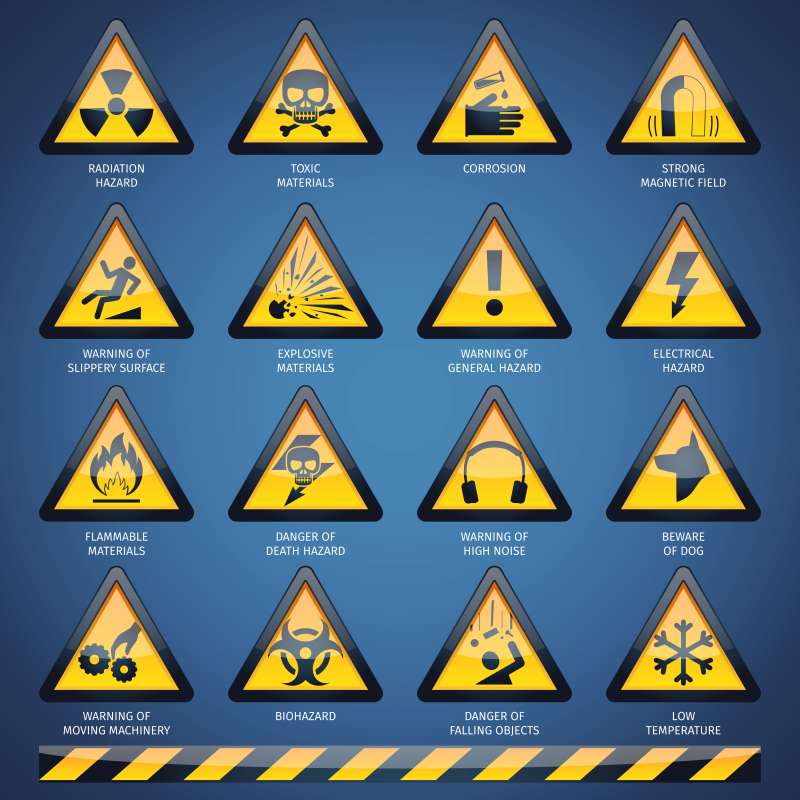Safety should always be the priority of every human being wherever they go, especially in office areas. The office area itself is inseparable from danger, one of which is the danger of fire. Based on data from the UK Home Office, there were more than 150,000 fires handled by the UK Fire Department from January to June 2020 and 18% of them fired which happen outside the house, one of which is in the office area. Danger knows no place and time and can happen to anyone. Therefore, we as individuals should be more aware of fire hazards, one of which is by knowing the types of fire hazards in office areas and how to keep them safe.
Types of Fire Hazards
There are various types of fire hazards that occur in office areas. These various types include materials from objects contained in the room, the room used, room conditions, room ventilation systems, etc. The following are the types of fire hazards in office areas.
1. Flammable liquids and vapor
Flammable liquids and vapors are commonly found in factory areas or industrial warehouses. Both objects can burn in an instant when they encounter even a small amount of fire. The way to fix this is to store the two objects with a neat seal and make sure they do not leak and place them in a place far from the source of the fire.
2. Combustible residual material
Combustible waste materials such as garbage or unused paper can be easily found in various office places. Few sources of fire such as cigarette punting that are still burning can trigger a fire. The way to overcome this is to sort and group the waste according to its type.
3. Electronic Devices
Electronic devices such as cable circuits can cause fires. The way to prevent this is to check regularly and replace devices that are no longer suitable for use with decent ones.
4. Use of sockets that exceed the capacity
The use of sockets that exceed capacity can trigger overheating and cause a fire. This can be overcome by limiting the use of sockets according to their capacity.
5. Smoking
Smoking can cause a fire if the cigarette is not completely turned off. Smoking in combustible areas can also cause fires.
6. Dust buildup
Dust or powder from processing wood, plastic, or metal can cause a fire if there is no good ventilation system in the room.
7. Objects that generate heat
Objects that generate heat such as electronic devices can be machined to generate heat that can cause fires. As much as possible keep these objects away from the source of the fire and unplug or turn them off when they are finished using them.
8. Blocked fire exits
Objects blocking the exit will impede evacuation and cause occupants to be caught in a fire.
9. Fire Door left open
A fire door is a door designed by fire so that the fire cannot spread to certain rooms such as fire escapes. If the door is knocked out, then efforts to prevent the propagation of the fire will be in vain.
10. Rarely checked Fire Alarms
The fire alarm is an important evacuation component when a fire occurs. If the alarm does not work, the fire can cause more casualties. Therefore, the inspection and testing of fire alarms are indispensable.
11. Human error and negligence
Human error and negligence are factors that often result in fires. This needs to be a concern so that we are always introspective in our every action in the work area so as not to cause harm to ourselves and others.

Figure 1. Fire Hazard Sign
Placement of Fire Protection Systems in Office Areas
Here are various types of fire protection systems in office areas:
1. Hydrant System
A Hydrant system is a water-based extinguishing system that includes a reservoir (water supply), pump housing (control panel, hydrant pump, various pumps, etc.), hydrant pillars ( water escape media ), and a hydrant box (fire hose, hose rack, nozzle, valve, and siamese connection). Reservoirs and pump houses are usually placed in the base area of the building while hydrant pillars and hydrant boxes are located on each floor and placed around the fire escape.
2. PFE (Portable Fire Extinguisher)
PFE is a small-scale extinguisher in the form of a high-pressure tube that can be carried by hand. Fire extinguishers usually contain water or foam that can be sprayed onto the burned area. PFE is usually placed on the wall on each floor.
3. Sprinkler
The sprinkler is an extinguisher that sprays water triggered by a smoke or heat detection system. Sprinklers are usually placed on the ceiling of the room with a maximum distance of 30 cm from the ceiling. The distance between each sprinkler is usually adjusted to the spraying range of each sprinkler.
Sources
Penulis: Winanda Amorosso - Student Intern di Ignis Fire & Risk
0 Comments